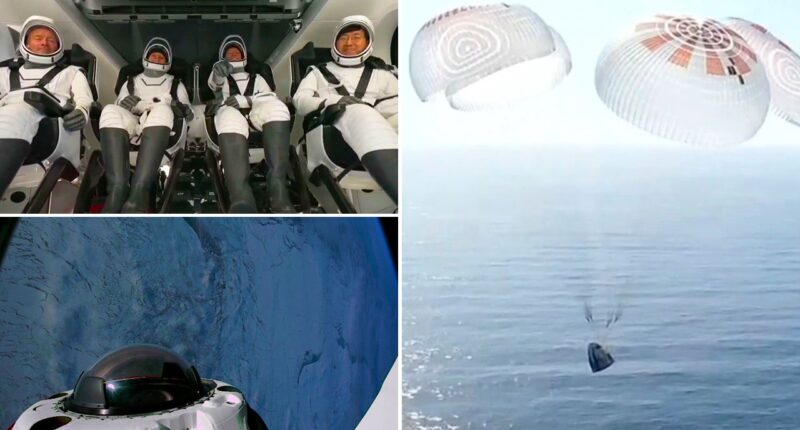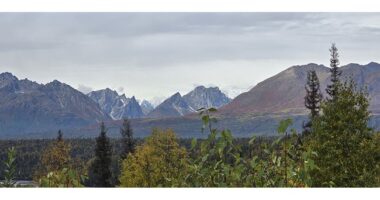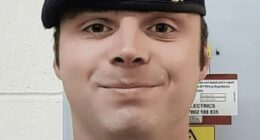A SpaceX capsule carrying four private astronauts who orbited the north and south poles landed in the Pacific Ocean off the coast of Southern California on Friday.
It was the first human spaceflight to circle the globe above the poles and the first Pacific splashdown for a space crew in 50 years, SpaceX said.
The “Fram2” mission, which was charted for an undisclosed price by Bitcoin investor Chun Wang, began Monday night when the quartet blasted off from NASA’s Kennedy Space Center on Monday night in a SpaceX Dragon capsule. The crew returned to Earth at around 9 a.m. local time on Friday.
“All four @framonauts [Fram2 astronauts] have safely exited Dragon unassisted,” SpaceX posted on X.
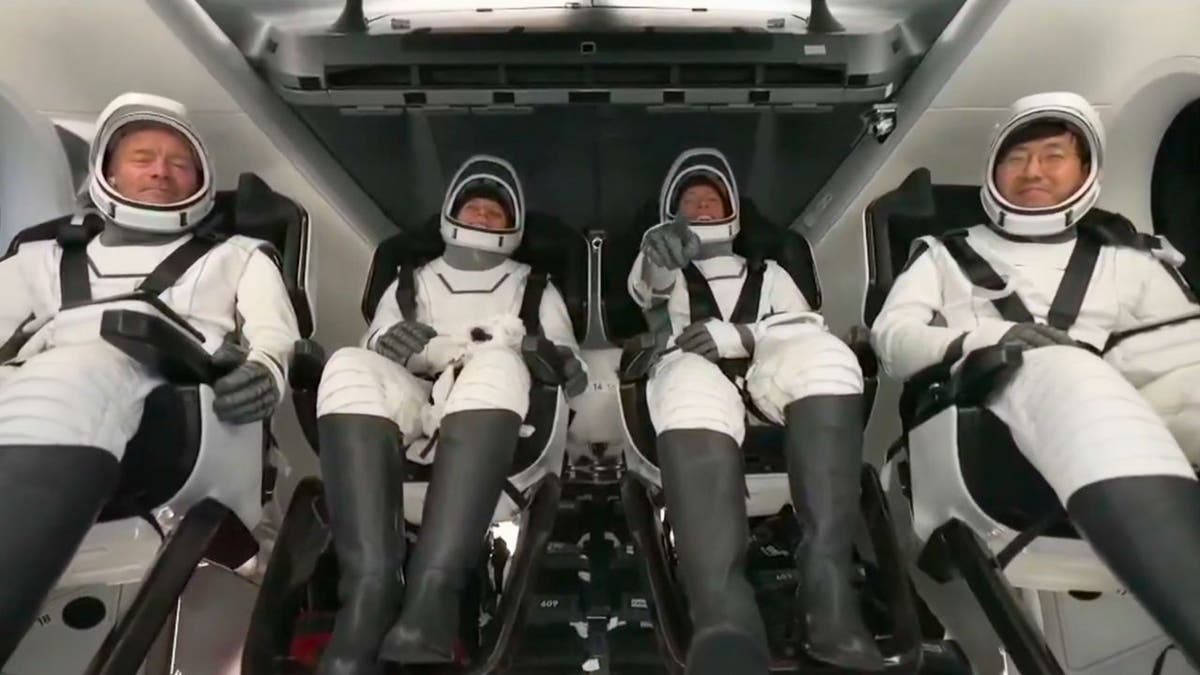
The SpaceX Fram2 crew after splashing down on Friday. (SpaceX via X)
The crew took the first X-ray in space, performed exercise studies to maintain muscle and skeletal mass and grew mushrooms in microgravity, the company said.
After the crew exits the Dragon spacecraft, they will not be given additional medical and operational assistance to help researchers characterize the ability of astronauts to perform unassisted functional tasks after short and long durations in space. The Fram2 astronauts spent over eight months training, which included numerous simulations and emergency preparedness, among other activities, according to Fram2.
It was the first human spaceflight for Wang, as well as vehicle commander Jannicke Mikkelsen, vehicle pilot Rabea Rogge, and mission specialist and medical officer Eric Philips.
They named their trip Fram2 after the Norwegian sailing ship that carried explorers to the poles more than a century ago. A bit of the original ship’s wooden deck accompanied the crew to space.
The last people to return from space to the Pacific were the three NASA astronauts assigned to the 1975 Apollo-Soyuz mission.
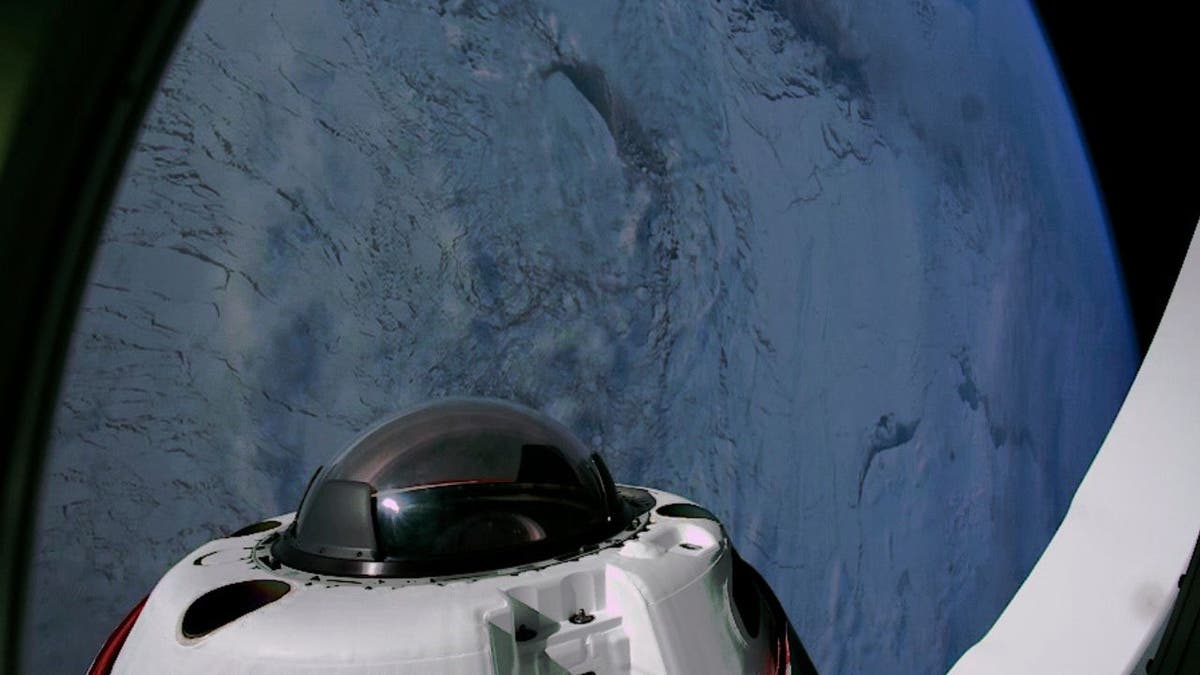
This photo provided by SpaceX shows the domed window of the Dragon capsule with a polar region of the Earth in the background on April 1, 2025. (SpaceX via AP)
SpaceX, which is owned by billionaire Elon Musk, said the decision to splashdown off California was based on safety and practicality factors, the company said.
The Associated Press contributed to this report.
